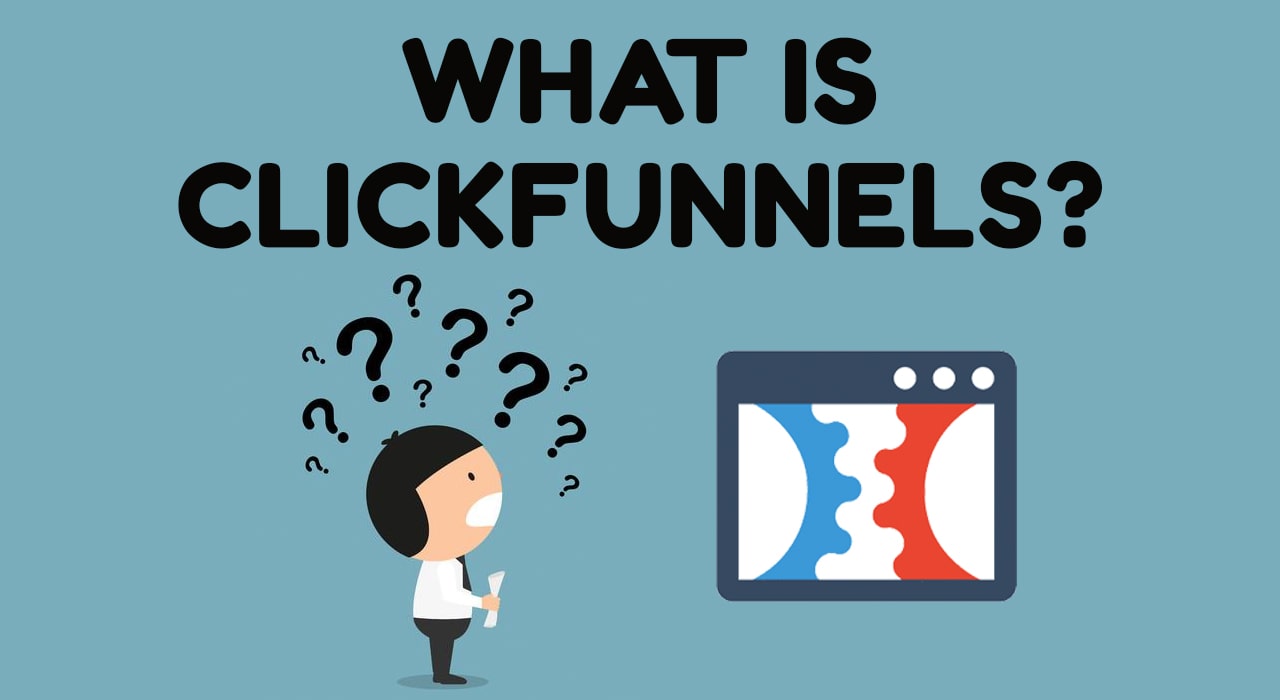Are you tired of your 9-to-5 job and looking for a way to make money online?
Affiliate marketing is a lucrative and flexible way to earn money online. By promoting products or services from other companies, you can earn a commission on sales made through your unique affiliate link. Whether you have a background in marketing or are just starting out, affiliate marketing can be a great way to build a passive income stream.
In this guide, we will walk you through the process of getting started with affiliate marketing, from choosing a niche to creating a website or blog, and everything in between. By following these steps, you can start earning money through affiliate marketing and build a successful online business.
Table of Contents
What is Affiliate Marketing?
Affiliate marketing is a type of performance-based marketing in which a business rewards affiliates for each new customer they refer to the business through their unique affiliate link. The affiliate earns a commission on any sales made through their link, which can range from a few percent to 50% or more of the sale price.
How Does Affiliate Marketing Work?
The process of affiliate marketing typically begins when business partners with affiliates to promote their products or services. The affiliate is provided with a unique link or code, which they can use to promote the business on their own website or through other marketing channels.
When a customer clicks on the affiliate’s link and makes a purchase, the affiliate earns a commission on the sale. The business tracks the sale through the affiliate’s link, and the affiliate is credited with the commission.
Benefits of Affiliate Marketing
There are many benefits to participating in affiliate marketing, including:
- Increased visibility and reach: Affiliate marketing can help businesses reach new customers and expand their customer base.
- Cost-effective marketing: Affiliate marketing is a cost-effective way for businesses to reach new customers, as they only pay affiliates for actual sales made through their links.
- Income opportunity: Affiliates can earn income by promoting products they believe in and earn commissions on any sales made through their links.
- Easy to get started: Starting an affiliate marketing program is relatively simple and requires little investment.
What do I need to start affiliate marketing?
To start affiliate marketing will need, a working laptop and an internet connection. In other words, you can do it completely for FREE.
For example, you can use youtube to promote an affiliate product, but if you don’t like to show your face, you have another option which it’s starting an affiliate blog.
Starting a blog is a great way to do affiliate marketing and it won’t cost you a lot of money, plus most of the affiliate networks will ask you for a website so they can make sure you are not a scammer You can start a blog today for just $ 2.95/ Month.

5 Easy Steps To Start Affiliate Marketing
Here Are 5 easy steps to start your affiliate marketing business:
Step 1: Choosing the Right Affiliate Program
The first step in getting started with affiliate marketing is to choose the right affiliate program. You want to find a program that aligns with your niche and target audience and offers a high commission rate. There are many affiliate programs available, including Amazon Associates, Commission Junction, ShareASale, and more. To find the right affiliate program for you, consider the following factors:
- Niche alignment: Choose a program that offers products that are relevant to your target audience.
- Commission rate: Look for programs that offer high commission rates, as this will increase your earning potential.
- Reputation: Check out online reviews and forums to get an idea of the reputation of the program.
- Payment terms: Make sure the program pays out on time and offers a convenient payment method.
Step 2: Create a Website or Blog
Creating a website or blog is an important step in getting started with affiliate marketing. Your website or blog will serve as the platform for promoting your affiliate products and tracking your results. Here are some important considerations when creating your website or blog:
Choose a Niche
When creating a website or blog for affiliate marketing, it is important to choose a niche. Your niche should be a specific area of interest that you are passionate about, and one that has a large audience. This will help you attract the right visitors to your site and increase your chances of success.
Choose a Platform
There are several platform options available for creating a website or blog, including WordPress, Wix, and Squarespace. When choosing a platform, consider your budget, technical skills, and design preferences.
WordPress is a popular choice among affiliate marketers, as it is flexible and easy to use, and there are many plugins available to help with affiliate marketing.
Choose a Domain Name
Your domain name is the address of your website or blog, and it is important to choose a domain name that is easy to remember and relevant to your niche. Try to choose a domain name that is short, memorable, and easy to spell.
Choose a Hosting Provider
Your hosting provider is the company that stores your website or blog files and makes them accessible to the public. There are many hosting providers available, and it is important to choose one that is reliable, offers excellent support, and has a good reputation.
Design Your Website or Blog
The design of your website or blog is important, as it will determine the user experience of your visitors. When designing your site, consider the following:
- Navigation: Make sure your site is easy to navigate, with a clear structure and intuitive menu.
- Content: Your content should be well-written, informative, and engaging.
- Images: Use high-quality images to make your site visually appealing.
- Loading Speed: Make sure your site loads quickly, as visitors are likely to leave if your site takes too long to load.
- Mobile Optimization: Make sure your site is optimized for mobile devices, as more and more people are using mobile devices to access the internet.
By following these steps, you can create a website or blog that is optimized for affiliate marketing and set yourself up for success.
Realated articles:
- How to Create a Website From Scratch (Step-by-Step Guide)
- How to Start a Blog From Scratch In 2023 (Beginner’s Guide)

Step 3: Create Valuable Content and use Your Affiliate Links
Now it’s time to start creating some content so you can put your affiliate links and of course, start making money. and you can do that in so many different ways including:
Review Posts.
Just as you were researching affiliate marketing programs to join, you should deeply understand the companies that you’re promoting and the tools or products they offer.
You should take advantage of this opportunity and include affiliate links on your blog by writing honest reviews about the products you are promoting.
Your first focus should be on keyword research and including headings that best match a searcher’s intent when researching the product you’re promoting. These reviews, provide in-depth information about everything a potential customer would need to know, such as:
- How to get set up or buy the product.
- The top pros and cons of using the product.
- Examples of others who have been successful with the product.
- Tips to be successful with the product that your audience can use.
While you are using these reviews to generate clicks on your affiliate links, it’s very important to be objective, fair, and transparent with your content.
Deep Product Tutorials.
On top of writing reviews of the products themselves, you can also promote affiliate links by creating in-depth product tutorials.
This is similar to reviews, but you’re taking a deep dive into “how-to” focused content. For instance, if you join the Amazon Associates affiliate program, select products you have experience with and write content around:
- How to use the product.
- How to order the product.
- The pros and cons of the product.
- Where to find the product.
- Insider product tips.
Automated Emails.
As an affiliate marketer and blogger, you have to build up a loyal following of readers to get long-term success. Email marketing is a great way of driving visitors to your website, distributing your content, and managing relationships with readers.
Once readers subscribe to your email list, send them an automated email series. In this email series, you can use your affiliate links by sharing relevant articles. However, do not be spammy with your links.
First of all, build trust with your readers by telling your unique story, then eventually providing free information that will help them. most Affiliate revenue is secondary to helping your readers solve their problems.
Step 4: Promote Your Affiliate Products
The next step is to promote your affiliate products. There are several methods you can use to promote your affiliate products, including:
Content Marketing
One effective way to promote your affiliate products is through content marketing. By creating valuable and informative content, such as blog posts, videos, and infographics, you can showcase your affiliate products and educate your audience about their benefits. When creating content, make sure to include affiliate links that allow your audience to easily purchase the products you are promoting.
When creating content, it’s important to focus on the following:
- Quality: Make sure your content is well-researched and provides real value to your audience.
- Relevance: Ensure your content is relevant to your niche and the products you are promoting.
- Optimization: Optimize your content for search engines by including relevant keywords, meta descriptions, and alt tags.
Social Media
Another way to promote your affiliate products is through social media. Social media platforms, such as Facebook, Twitter, and Instagram, provide a large audience that you can tap into to promote your affiliate products. When promoting your affiliate products on social media, it’s important to focus on the following:
- Engagement: Engage with your followers by responding to comments and messages.
- Relevance: Ensure your social media posts are relevant to your niche and the products you are promoting.
- Timing: Timing is critical on social media. Make sure to post at times when your audience is most active.
Paid Advertising
Paid advertising, such as Google AdWords or Facebook Ads, can be an effective way to promote your affiliate products to a targeted audience. When using paid advertising, it’s important to focus on the following:
- Targeting: Make sure to target your audience based on their interests, behaviors, and demographics.
- Relevance: Ensure your ads are relevant to your niche and the products you are promoting.
- Budget: Set a budget for your paid advertising campaigns and make sure to monitor your results to optimize your campaigns.
Email Marketing
Email marketing is another effective way to promote your affiliate products. By building a list of subscribers, you can promote your affiliate products directly to their inboxes, you can use an email marketing service such as Convertkit.
When promoting your affiliate products through email marketing, it’s important to focus on the following:
- Relevance: Ensure your emails are relevant to your niche and the products you are promoting.
- Personalization: Personalize your emails by using the subscriber’s name and providing value-added content.
- Timing: Timing is critical in email marketing. Make sure to send emails at times when your subscribers are most likely to open and engage with your emails.
There are several methods you can use to promote your affiliate products. By focusing on quality, relevance, and optimization, you can effectively promote your affiliate products and drive sales.
Step 5: Track and Optimize Your Results
The final step is to track and optimize your results. You should track your results using a tracking tool, such as Google Analytics, to measure the success of your affiliate marketing efforts. You can then use this information to make adjustments to your strategy and optimize your results.
Final thoughts
Affiliate marketing has proven to be a highly effective way of earning passive income online. With the right approach, you can leverage the power of this business model to achieve financial freedom and fulfill your entrepreneurial dreams. This step-by-step guide has provided you with the essential knowledge and skills to get started with affiliate marketing.
By selecting the right affiliate program, building a strong platform, creating engaging content, driving targeted traffic, and tracking your performance, you can increase your chances of success. However, it’s important to remember that affiliate marketing is a competitive field and requires hard work, patience, and dedication. To become a successful affiliate marketer, you must continuously learn and adapt to the ever-changing landscape of the digital world.
Keep in mind that your affiliate marketing journey is a marathon, not a sprint, and the results you achieve will depend on the time and effort you put into it. With the right mindset and approach, you can achieve great things as an affiliate marketer and enjoy the freedom and financial security that comes with it.








1 Comment
Like!! Really appreciate you sharing this blog post.Really thank you! Keep writing.